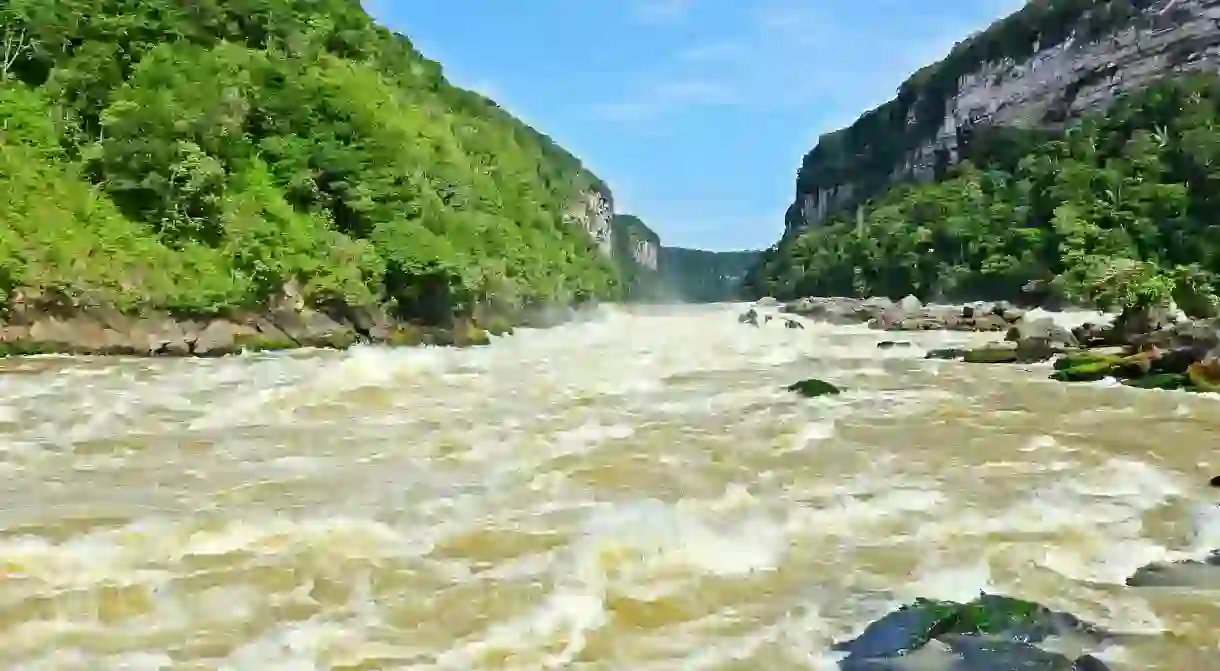You Can Now Visit This Terrifying Former Prison in the Colombian Jungle

Araracuara – in the heart of the Colombian Amazon – was once a penal colony for Colombia’s worst and most dangerous criminals. A small settlement on the banks of the Caquetá River, surrounded on all sides by jungles and raging river rapids, escape was considered impossible. However, the prison has now been closed since 1971 and Araracuara is slowly opening up to tourism.
The Araracuara penal colony was first envisioned by Colombian president Enrique Olaya Herrera in 1935 – he wanted to place three maximum security prisons around Colombia: two on the Pacific islands of Malpelo and Gorgona, and one in the jungles of Caquetá at Araracuara. The prison was first opened by President Alfonso López Pumarejo in 1937 and more than 5,000 Colombian prisoners passed through the infamous Araracuara penal colony between 1938 and 1971.

The Araracuara region had a dark history which long preceded the prison – the areas surrounding the Caquetá and Putumayo rivers were strongly affected by the violence of the rubber industry and the rubber wars at the beginning of the 19th century. The horrific abuses of the Peruvian rubber company Casa Arana and similar Colombian and international rubber companies left deep wounds in the region of Araracuara, particularly within Indigenous communities: it is estimated that more than 40,000 Indigenous people were killed during the era of the rubber boom in the region of the Northwestern Colombian Amazon.
However, it was the prison that really brought attention to the name Araracuara throughout the rest of Colombia – the prisoners housed there were often some of the most violent murderers and criminals in the country. Former prisoners have asserted that horrendous torture practices were common among the guards and that the inmates’ living conditions were no better than battery hens. It was a place that outsiders often feared to tread: the book One River – which is about the pioneering travels of ethnobotanist Richard Evans Schultes in the region during the 1930s and ’40s – describes how Shultes and his local companion arrived at Araracuara to collect plants “armed with pistols and shotguns” in order to protect themselves from the prisoners.
However, Araracuara is a truly spectacular place – the boundless jungles and huge rapids which made escape impossible for the prisoners are increasingly attractive to tourists wishing to explore further off-the-beaten-track in Colombia’s unexplored Amazon. The Devil’s Canyon – the raging rapids formed when the Caquetá River is squeezed through an 80m high canyon just 30m wide – is a truly breathtaking spectacle, and the surrounding rocks are etched with ancient Indigenous petroglyphs too.

The biodiversity is equally impressive: flocks of macaws nest on the walls of the canyon and can often be seen flying overhead at dusk and dawn, and smaller creeks surrounding Araracuara are home to otters, dolphins, caiman and huge fish, perfect for sport fishing enthusiasts. Visitors can also learn about local Indigenous cultures by visiting surrounding communities and participating in traditional rituals.
There are a few tour companies now offering trips to Araracuara (which is almost impossible to visit independently) – both Outlanders Colombia and Caquetá Adventure can arrange an all-inclusive visit. The “airport” – a long strip constructed by the prisoners back in the day – is one single airstrip alongside the canyon and the landing is about as spectacular as any in Colombia. Check out this video to see for yourself…
Araracuara’s history is a truly fascinating one and is often dark and disturbing. However, as in much of Colombia, tourism is providing alternatives in the region, and people are finally starting, little by little, to discover the magic and beauty of this once terrifying jungle prison.













